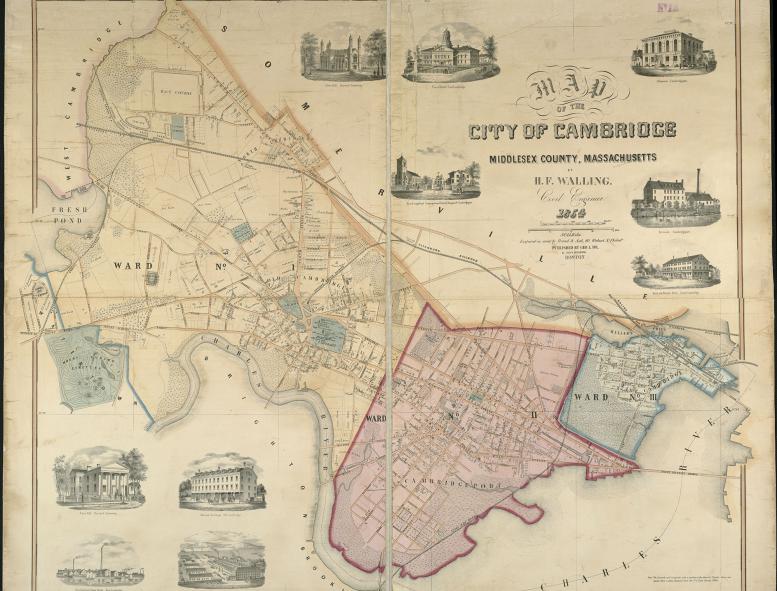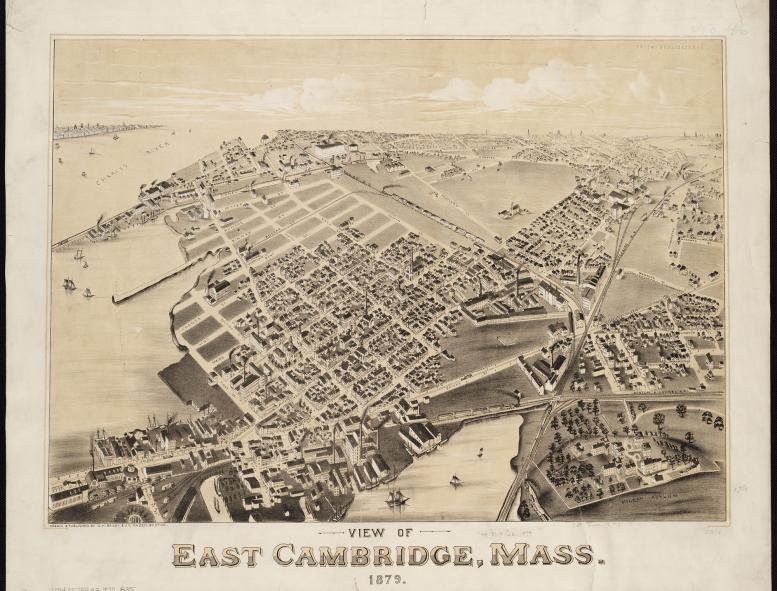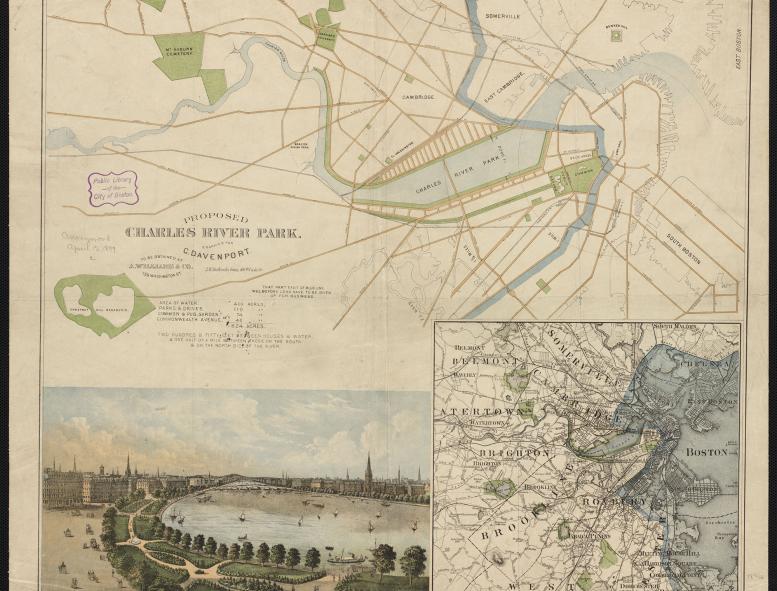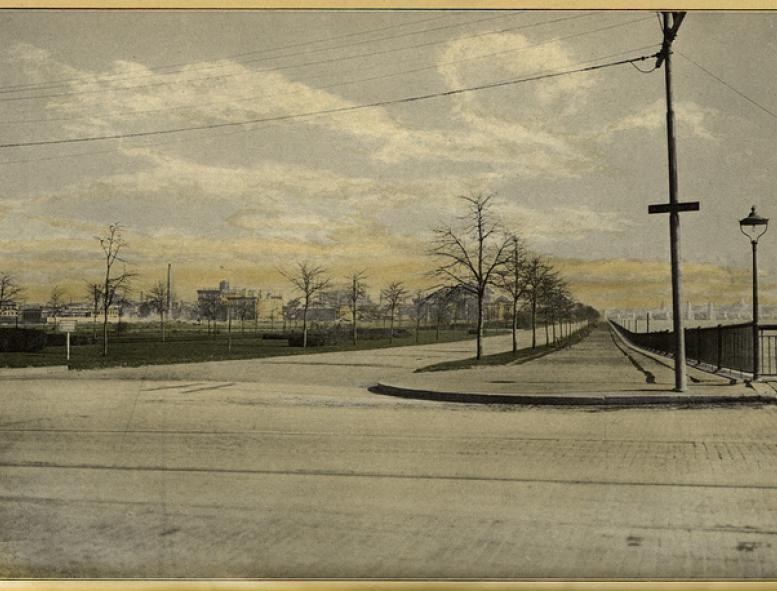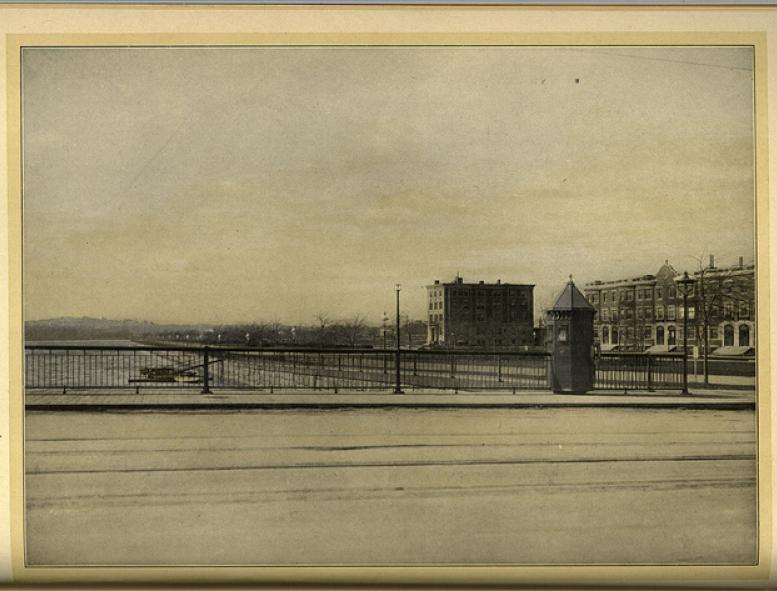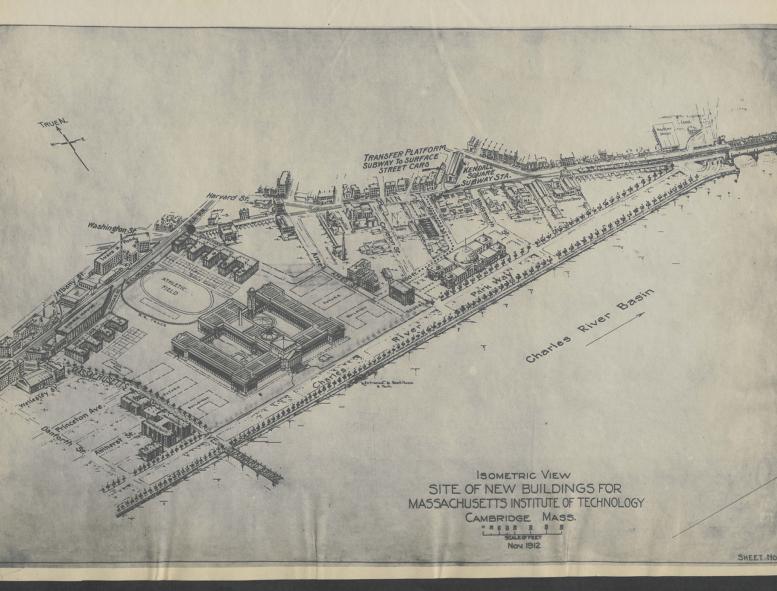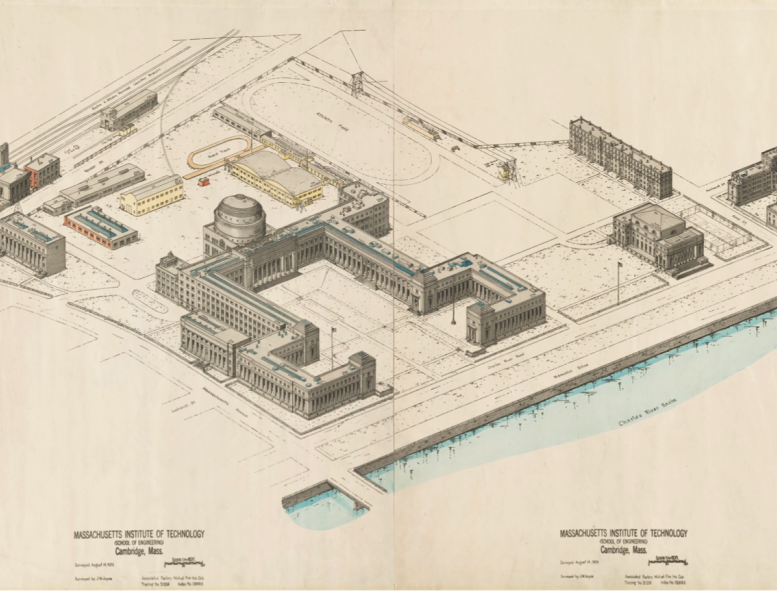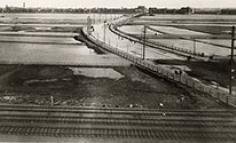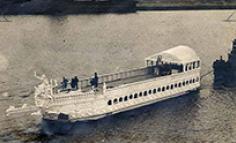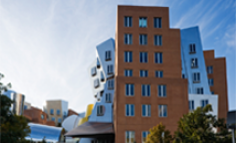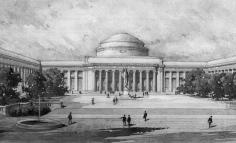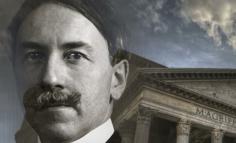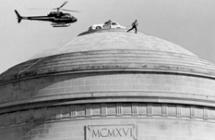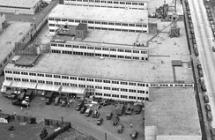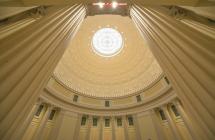An Evolving Frontier
When MIT moved its campus to Cambridge in 1916, it didn’t exactly slip into town quietly.
“New Tech,” as it was called, broke existing rules of institutional architecture and construction. Chutes from massive towers delivered a continuous flow of cement as the nation’s largest private concrete building rose nearly a foot a day. When the engineering marvel was complete, MIT dignitaries floated over from Boston on an elaborate ceremonial barge to greet the thousands of alumni awaiting them on the opposite bank. Explore the history of that move and the colorful evolution of the Cambridge campus through the photos, videos, and stories that will continue to populate these pages as we approach the start of the celebration.
Explore the evolution of MIT’s campus through image galleries.
A Century of Impact
A Century of Impact offers a brief introduction to key themes of MIT’s history, particularly as it entwines with that of the City of Cambridge. Select a topic below; from that page, you may use the submenu at upper right to navigate among all themes. For even more history, browse A Campus Built for Innovation and Infinite History.
Architectural Evolution and Reinvention
MIT’s campus architecture has always been a metaphor for the work happening inside. The original campus buildings were an expression of founder William Barton Rogers’s vision for contiguous spaces that promoted hands-on collaboration. More
The MIT Way
MIT has never had a weakness for the conventional. Here, the most mundane tasks are an opportunity for invention. That culture of unfettered innovation has inspired generations of successful inventors and entrepreneurs—arguably more than any other institution on earth. More
The Cambridge Factor
MIT would be a very different institution had its campus been based anywhere but Cambridge. More
Magical Incubators
Building 20, MIT’s temporary war-works headquarters, earned a reputation as a “magical incubator” in the mid-20th century because of the pioneering work that went on there during and after World War II. Although the structure was temporary, the culture of Building 20 pervaded MIT to the extent that the campus today has become an integrated network of magical incubators. More
Shaped by and Shaping the World
Although the world traditionally thinks of MIT in terms of scientific and technological innovation, the community channels its zest for invention into all areas of human endeavor. From efforts to mitigate poverty and climate change to expanding the global reach of education, the Institute’s passionate innovators have shaped the world we live in—and are shaping it now. More
A Campus Built for Innovation
The construction of a new campus in Cambridge helped advance MIT as a leader in its field—and as an engine of innovation. A key aspect of MIT’s campus was (and still is) its versatility and abiding capacity to evolve. Presented by the MIT Department of Facilities



